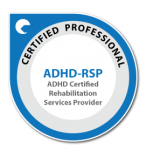

“He only wants to play video games!”
“She cannot get herself to do any of the assigned schoolwork.”
“He won’t even keep his body clean, let alone his room.”
“She refuses to do even basic chores!”
“Everything takes forever, and I have to constantly remind and nag!”
We live in a world where there is constant competition for our attention. Activities and entertainment that stimulates the pleasure center of the brain naturally keep us coming back for more. Kids with ADHD are especially engaged in things that they find personally rewarding, super interesting, or that pique their curiosity in some other way. They are motivated to learn and participate. On the other hand, tasks that are too boring, rote, or challenging will get the short end of the stick. They simply cannot muster the energy or interest required to effectively engage. This comes off to adults as lazy or unmotivated. It can manifest in avoidance or refusal behavior.
Those things that light your child up, engage and engross them entirely – they are motivated for. That is self-motivation and that is the best kind of motivation! They don’t need someone telling them to do it, and they definitely do not need rewards or consequences. You typically do not have to beg your child to watch more YouTube videos!
In this blog, I am going to show you how to help your child with ADHD to grow their own motivation for those things that you do have to beg them to do. Doing this helps your child develop a “work first, play later” ethic, more independence, greater self-esteem, and gets parents off their back. Win-win!
Your child is already capable of being motivated. The question is, how do we tap that resource and apply it to other areas?
It starts with this little trick that I’ve learned in my work with kids and teens who have ADHD. A parent or parents will often say that their child is unmotivated for the “non-preferred” tasks, but highly motivated for things they love. So, I begin with the strengths. I ask my new client to describe in detail to me what they are interested in. I want to know what is easy or pleasurable about it and how it makes them feel when they experience success. Then I ask them to find something about it that they still need to work on, that they are not good at yet. For example, the kiddo who loves gaming and wants to design their own games but doesn’t know much about coding. The one for whom basketball is life but wants to improve on his free throws. The gymnast who is learning a new trick on the uneven bars and asks for more time with the coach. The teen who wants to be a writer but can’t decide on a topic and starts and stops many potential short story ideas and needs some direction.
All these kids are highly motivated to engage in their passion, and they might even be content to stay where they are. When I ask them to think about something that challenging but not discouraging, they can often come up with an answer, but they don’t know the steps to take to improve. Once we identify an area where they would like to get better, we turn it into a goal using the SMART acronym (specific, measurable, achievable, realistic, and time-bound). Many kids who have ADHD find it very difficult to plan far into the future. To help this, I have them first write down the bigger goal to keep it visible. Then we pull out a small, short-term goal that they can start working on to make quick improvement. The goal should be 1 – 2 weeks away, and focus on something the child chooses, whether it is important to the parent or not! In the previous examples, those goals may look like:
You will notice that these are all quite small goals, but they will move a child forward toward their larger goal. Using the big goal and making lots of plans that will take months or longer to achieve can be overwhelming. The key is to keep it small!
The next step after making a goal is to examine the steps needed to accomplish the goal, discuss any potential obstacles that may occur and how to overcome them, and devise a plan to achieve the goal.
This is how we use the muscle of internal motivation that already exists to improve and enhance current interests and goals. With that, the child begins to experience increased success. I explain that doing nothing will get them exactly where they are today in one week but doing something (even something very small) will lay the groundwork for continued motivation.
From here we can begin to transfer this skill into other tasks – the “must do’s” like schoolwork and chores. I know what you are thinking – that it is a big leap from a personal goal to homework or chores, especially when kids with ADHD are constantly looking for a high level of interest or novelty. Will we magically make doing homework, laundry, cleaning a bathroom or brushing teeth exciting and worthy of a surge of motivation? Not likely! But we will teach our kids that they can use the same strategy to get the harder or less interesting things done – and that this is a life skill! There will always be things that we don’t “want” to do. There will always be things that we find boring, hard, or just too repetitive. (I just did laundry 3 days ago… Why is there a huge pile again?!)
Goals I have made with kids on these types of tasks look like this:
All of us parents want our children to have a good work ethic. The goals above are typically not ones that kids get excited about, but there are benefits to learning to do them reliably. I work to help kids understand that being done with these less motivating tasks frees them up to engage in the activities that they would rather be doing. To take this skill development one step further, I ask kids what they are motivated by, and how they can create a routine to get those “must do” things done first before the “want to do” things. They often say things like playing video games, hanging out with friends, relaxing, or napping, earning money and the like. When put in charge, many kids are great at coming up with a system to accomplish this.
I could write a whole blog just about the research behind rewards and punishments and how motivating or not motivating they are, especially for kids with ADHD. I operate on this idea: rewarding behavior, punishing behavior, or threatening to punish behavior do not actually teach a child anything. This practice may have a temporary effect, but a child who struggles with the task or expectation will continue to struggle unless and until they are set up for success by breaking down the skill, making it into a small goal, identifying potential obstacles, and formulating a plan for achievement.
Instead of doling out random rewards that have no connection to the task you desire (toys, money, promises of treats or extra time on electronics), help your child learn to reward themselves for the work they’ve done. This could be delaying a snack or playing video games until the task is completed or engaging in self-imposed breaks during long sessions of homework. Adding self-talk is another strategy to improve internal motivation. That might sound like:
It is a small but subtle difference for a child to treat themselves. We as adults do this all the time with unpleasant tasks at home and work. We tell ourselves to just get them done, then we can cue up Netflix. If another adult was constantly dangling a reward, or threatening to punish you, you might just as well decide that the reward isn’t worth it, or you can endure the punishment. Use adult-imposed rewards and punishments sparingly if you want to help foster internal motivation.
In summary, kids know what they need to do. They are naturally more motivated to do the things they would rather do, and this is no surprise. We can help kids who have ADHD develop skills toward improvement and internal motivation starting with something they already like and engage in. From there, we can add small goals toward the less preferred but still necessary tasks. Keeping the benchmarks short and the goals small builds success and momentum a little at a time. Give kids autonomy in coming up with a system to reward or motivate themselves when they hit their daily goals.
Inquire about our ADHD services if you want to help your child or teen improve their motivation.




Copyright 2024 © Kids Empowered 4 Life. All rights Reserved.
All information on the Website is presented as informational only and is not a replacement for therapy assessment, diagnosis, intervention, or medical advice. The information provided on the Website is provided “as is” without any representations or warranties, express or implied. Kids Empowered 4 Life assumes no responsibility for errors or omissions that may appear in the Website.